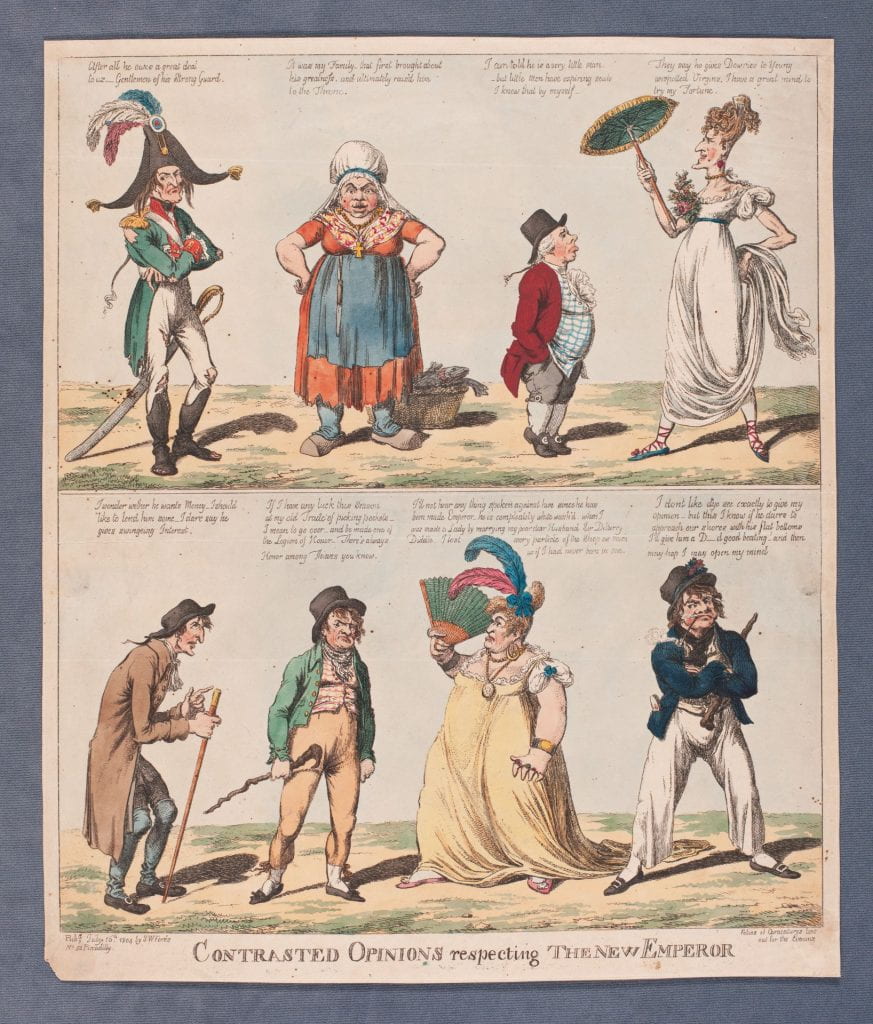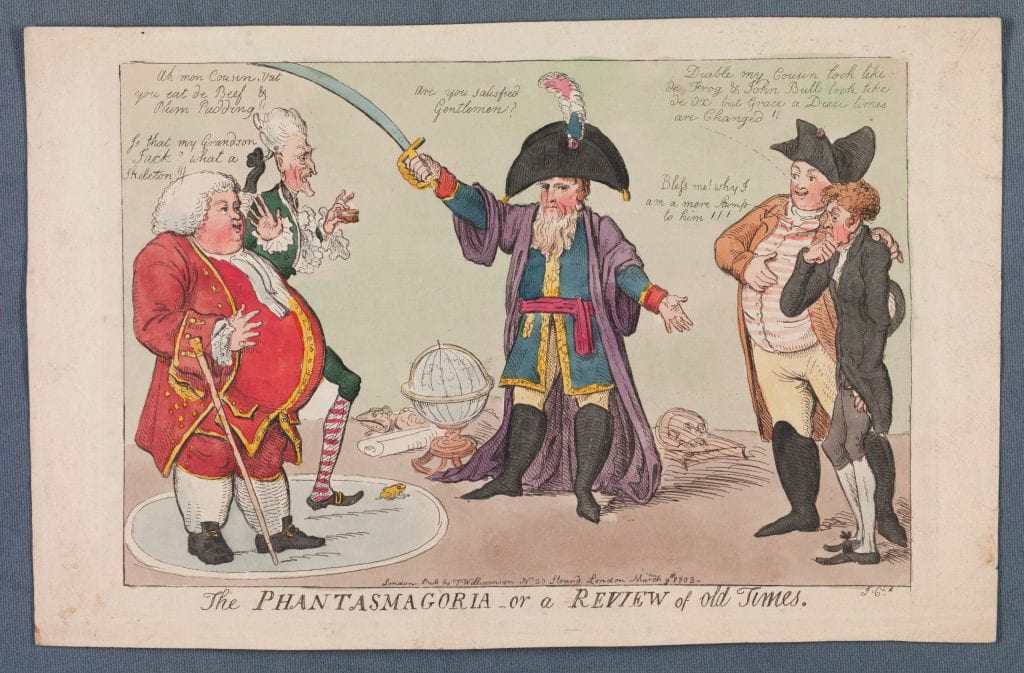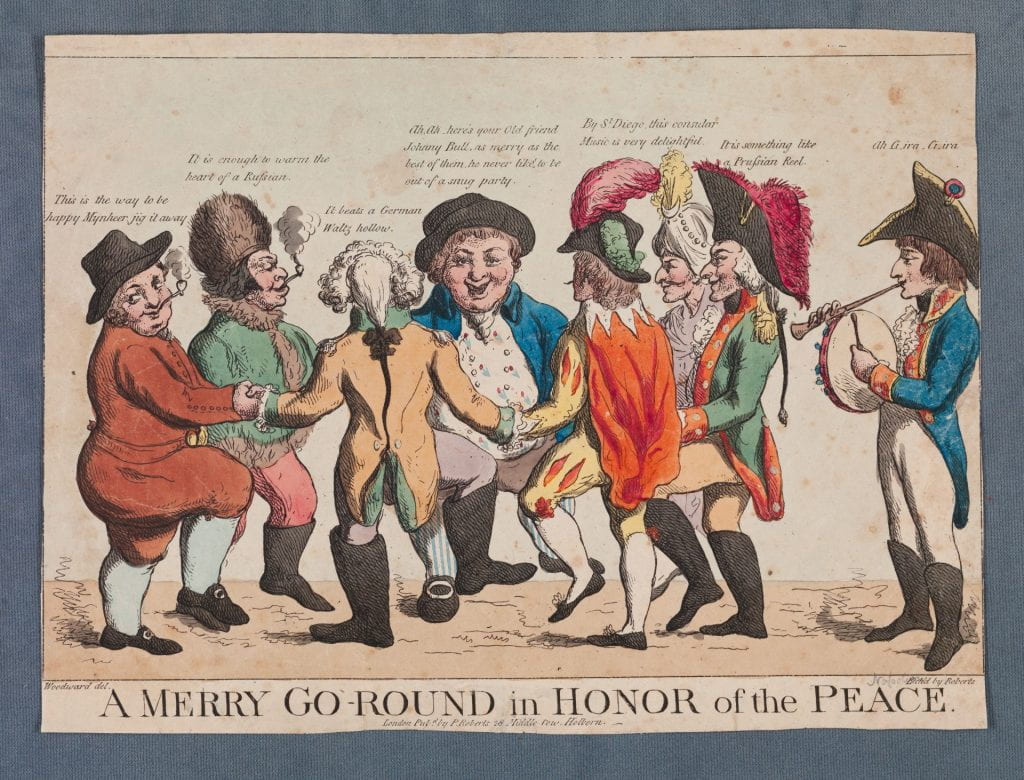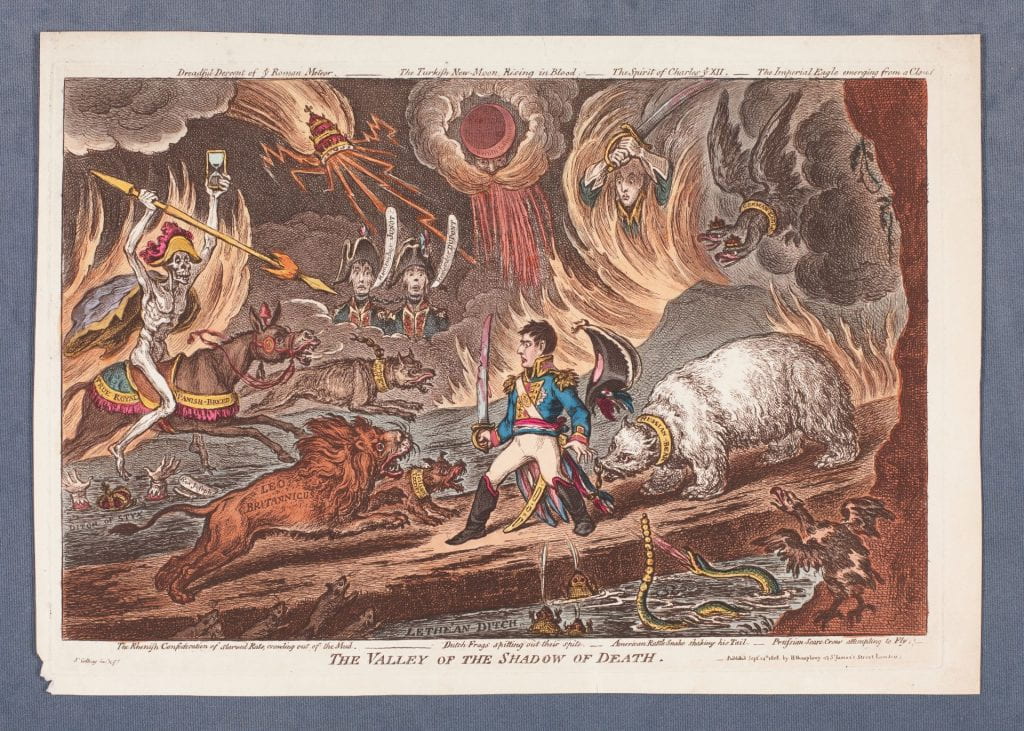
“A satire on the approaching election for the Chancellorship of Oxford University. Grenville, dressed as a cardinal, heads a small procession towards the Devil, who wears a robe on which is a large cross, and holds the bland mask with which he has been hiding his face. Grenville, bowing low, and deferentially holding his large hat, holds out a paper: Catholic Petition for the vacant Chancellorship with a Plan for Erecting a New Popish Sanhedrim on the ruins of old Alma-Mater, The Devil says: Well done my Children! This is all the Convocation I would have; in his left hand is a pitchfork. The Marquis of Buckingham, dressed as a Jesuit, stands behind him, one hand on his shoulder, the other holding his barbed tail. Beside him is Canning (unrecognizable) wearing a Jesuit’s biretta. Beside the Devil is a greyhound with the head of Grey, its collar inscribed Popish Gray Hound. Immediately behind Grenville walks the Pope, wearing his tiara, and holding his cross; he holds up Grenville’s robe on which is a large cross. Napoleon crouches behind the Pope, holding on to his robes and hiding under his mantle. He wears a crown, with uniform and spurred boots; his hand is on the hilt of his sword. Behind walk together Temple, enormously fat and dressed as a monk, and his brother, Lord George Grenville, similarly dressed. The former carries the Host, the latter a lighted candle. In the background rows of bishops and clergymen face the procession. Bishops in the front row, humbly sweeping the ground with their mitres, bow low, each clasping a Mass Book, while those behind cheer with raised mortar-board, hand, or Mass Book. On five of the books are the names of bishoprics: York [Vernon], St Asaph [Cleaver], London [Randolph], Oxford [Moss], Norwich [Bathurst]. Above the design (and the bishops): Golgotha, i.e: the place of Skulls.”–British Museum online catalogue.
- Printmaker: Gillray, James, 1756-1815, printmaker.
- Title: The introduction of the Pope to the Convocation at Oxford by the Cardinal Broad-bottom [graphic] / Js. Gillray fect.
- Publication: [London] : Publishd. by H. Humphrey, 27 St. James Street, London, Decr. 1st, 1809.
Catalog Record
809.12.01.04+
Acquired January 2020




 “Bonaparte (left) and Cornwallis play chess. Bonaparte, not caricatured, alert and military, wearing his large plumed cocked hat, leans forward, pointing to his move; his left arm lies on the table and in his left hand is his sheathed sabre. He says: “Check to your King, remember it is not the first time, and I think a very few Manœuvres more will completely convince you that I am better acquainted with the Game I am playing than you are aware of.” Cornwallis, plump and civilian despite his regimentals and profession, sits without a hat, scratching his head apprehensively. He says: “Curse it I shall lose this Game; You are too much for me.” He wears his ribbon and star, ‘Honi soit’ on his garter. The chairs are symbolical: that of Bonaparte has ormolu laurel wreaths, the legs are formed of fasces and axes; that of Cornwallis, with plain oval back, suggests an English drawing-room.”–British Museum online catalogue.
“Bonaparte (left) and Cornwallis play chess. Bonaparte, not caricatured, alert and military, wearing his large plumed cocked hat, leans forward, pointing to his move; his left arm lies on the table and in his left hand is his sheathed sabre. He says: “Check to your King, remember it is not the first time, and I think a very few Manœuvres more will completely convince you that I am better acquainted with the Game I am playing than you are aware of.” Cornwallis, plump and civilian despite his regimentals and profession, sits without a hat, scratching his head apprehensively. He says: “Curse it I shall lose this Game; You are too much for me.” He wears his ribbon and star, ‘Honi soit’ on his garter. The chairs are symbolical: that of Bonaparte has ormolu laurel wreaths, the legs are formed of fasces and axes; that of Cornwallis, with plain oval back, suggests an English drawing-room.”–British Museum online catalogue.




